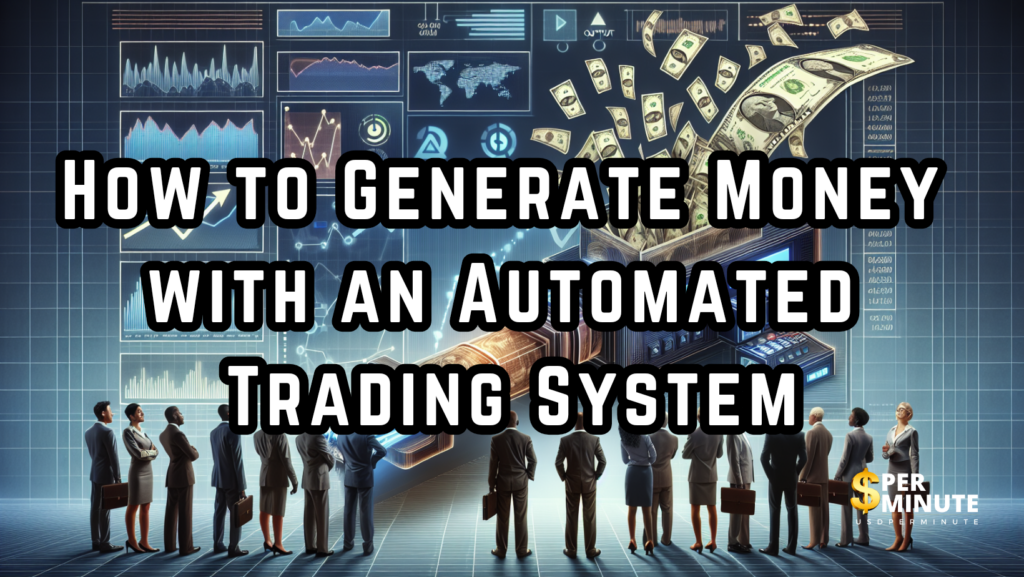How to Generate Money with an Automated Trading System

Automated trading systems, also known as algorithmic trading or trading bots, have revolutionized the way traders interact with financial markets. These systems can execute trades automatically based on pre-defined criteria, removing the need for constant manual intervention. Here’s a comprehensive guide on how to generate money using an automated trading system.
1. Understand Automated Trading
Before diving into automated trading, it’s essential to understand what it is and how it works. An automated trading system uses algorithms to analyze market data and execute trades based on predetermined rules. These rules can be based on technical indicators, price patterns, or other market data. The primary advantages of automated trading include speed, precision, and the ability to operate continuously without human intervention.
2. Choose the Right Trading Platform
Selecting the right trading platform is crucial for automated trading. Popular platforms like MetaTrader 4 (MT4) and MetaTrader 5 (MT5) offer robust support for automated trading. These platforms allow you to develop, test, and deploy trading bots (Expert Advisors or EAs) using their respective programming languages, MQL4 and MQL5.
3. Develop a Trading Strategy
A well-defined trading strategy is the backbone of any successful automated trading system. Here are the steps to develop one:
- Define Objectives: Determine your financial goals, risk tolerance, and time horizon.
- Choose a Market: Select the market you want to trade in, such as forex, stocks, commodities, or cryptocurrencies.
- Identify Entry and Exit Rules: Establish clear rules for entering and exiting trades. This can be based on technical indicators, price action, or other market conditions.
- Risk Management: Incorporate risk management rules, such as stop-loss orders, take-profit levels, and position sizing.
4. Create or Purchase a Trading Bot
Once you have a strategy, you can either create your own trading bot or purchase one from a reputable source.
- Creating a Bot: If you have programming skills, you can develop your own bot using the platform’s scripting language. For MT4 and MT5, this involves using MQL4 or MQL5 to code your strategy.
- Purchasing a Bot: There are numerous pre-built trading bots available for purchase. Ensure you buy from a trusted provider and that the bot aligns with your trading strategy and risk profile.
5. Backtest Your Strategy
Backtesting involves testing your trading strategy against historical market data to see how it would have performed in the past. This step is crucial to ensure your strategy is viable and to fine-tune your rules. Most trading platforms offer built-in backtesting tools that allow you to simulate your strategy on historical data.
6. Optimize and Validate
Optimization involves adjusting your strategy parameters to improve performance. However, be cautious of overfitting, which occurs when a strategy is too finely tuned to historical data and may not perform well in live trading. Validation, or forward testing, on a separate dataset helps ensure your strategy’s robustness.
7. Deploy Your Trading Bot
Once you’re confident in your strategy, deploy your trading bot in a live trading environment. Start with a demo account to observe its performance in real-time without risking actual capital. If the results are satisfactory, you can then move to a live account.
8. Monitor and Adjust
Automated trading doesn’t mean you can set it and forget it. Regular monitoring is essential to ensure the bot is functioning correctly and adapting to changing market conditions. Be prepared to make adjustments to your strategy or the bot’s parameters as necessary.
9. Diversify Your Strategies
Relying on a single trading strategy can be risky. Diversify by developing or using multiple strategies that perform well in different market conditions. This can help smooth out returns and reduce overall risk.
10. Stay Informed
The financial markets are constantly evolving. Stay informed about market trends, new technologies, and regulatory changes that could impact your trading. Continuous learning and adaptation are key to long-term success in automated trading.
Conclusion
Generating money with an automated trading system requires a combination of a well-defined strategy, the right tools, and ongoing management. By understanding the fundamentals of automated trading, developing robust strategies, and continuously monitoring and optimizing your systems, you can leverage the power of automation to achieve your financial goals. Remember, while automated trading can enhance efficiency and profitability, it also involves risks, so always proceed with caution and informed decision-making.